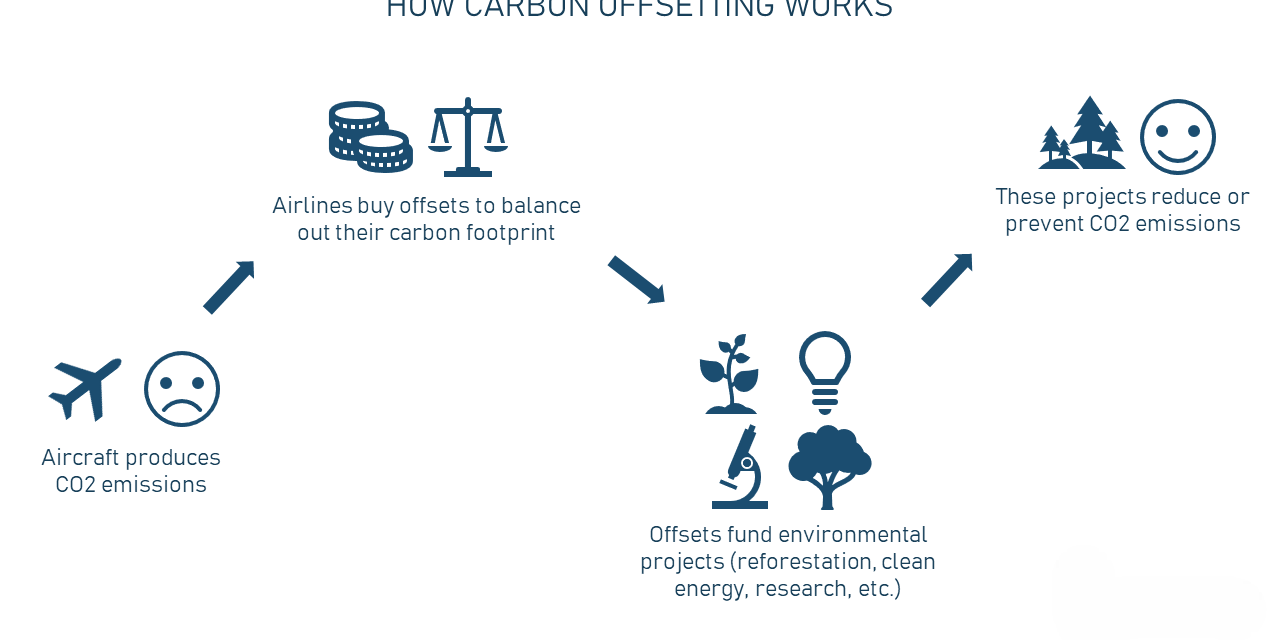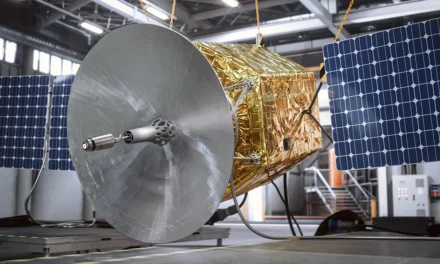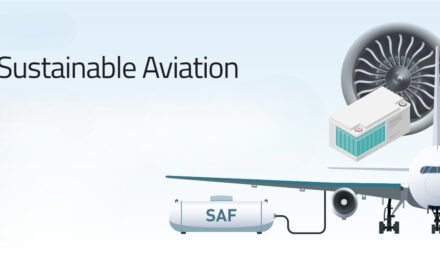Carbon offsetting in the aviation industry is a mechanism where airlines and passengers compensate for the carbon dioxide (CO₂) emissions produced by flights by investing in projects that reduce or remove an equivalent amount of CO₂ from the atmosphere. It is part of broader efforts to mitigate aviation’s environmental impact and move toward sustainability. Here’s an overview of how carbon offsetting works, its mechanisms, and its effectiveness:
1. How Carbon Offsetting Works in Aviation
1.1 Emissions Calculation
- Airlines calculate the CO₂ emissions per passenger per flight based on:
- Distance flown (short-haul vs. long-haul flights).
- Aircraft type and fuel efficiency.
- Passenger load factor (number of passengers relative to available seats).
- Online Tools: Airlines often provide emission calculators to estimate the environmental impact of a flight.
1.2 Offset Options
- Airlines and passengers can purchase offsets to neutralize these emissions. Options include:
- Voluntary Offsets:
- Passengers pay a fee to offset their share of the flight’s emissions.
- Many airlines, like British Airways and Lufthansa, offer offset programs during ticket booking.
- Mandatory Offsets:
- Airlines offset emissions for certain flights or entire operations as part of their sustainability commitments.
- Voluntary Offsets:
1.3 Offset Projects
- The funds from offsets are invested in projects designed to reduce or capture CO₂ emissions. Common projects include:
- Reforestation and Afforestation:
- Planting trees to absorb CO₂ from the atmosphere.
- Renewable Energy:
- Supporting wind, solar, and hydropower projects that replace fossil fuel-based energy sources.
- Energy Efficiency:
- Promoting cleaner cooking stoves or energy-efficient technologies in developing countries.
- Carbon Capture and Storage (CCS):
- Developing technologies to capture CO₂ directly from industrial processes or the air.
- Soil and Land Use Management:
- Improving agricultural practices to enhance carbon sequestration in soil.
- Reforestation and Afforestation:
1.4 Verification and Standards
- To ensure legitimacy, carbon offset projects must adhere to internationally recognized standards, such as:
- Verified Carbon Standard (VCS).
- Gold Standard.
- Climate Action Reserve (CAR).
- These standards ensure that projects deliver measurable, additional, and permanent emissions reductions.
2. Key Programs and Initiatives
2.1 CORSIA (Carbon Offsetting and Reduction Scheme for International Aviation)
- Implemented by the International Civil Aviation Organization (ICAO).
- Requires airlines on international routes to offset emissions above 2019 levels starting in 2021.
- Aims to cap net emissions at 2019 levels until more sustainable technologies are widely adopted.
2.2 Airline-Led Programs
- Airlines increasingly integrate carbon offsetting into their sustainability strategies:
- Delta Air Lines: Claims to be carbon neutral since 2020 by purchasing offsets for all emissions.
- easyJet: Offsets emissions for all flights as part of its environmental policy.
3. Effectiveness of Carbon Offsetting
3.1 Benefits
- Short-Term Emissions Mitigation:
- Provides an immediate way to compensate for aviation’s CO₂ emissions while long-term solutions (e.g., sustainable aviation fuels, electric aircraft) are being developed.
- Investment in Sustainable Projects:
- Supports renewable energy, forest preservation, and community development initiatives.
- Increased Awareness:
- Encourages airlines and passengers to consider the environmental impact of flying.
3.2 Challenges and Criticisms
- Lack of Additionality:
- Some projects may not provide emissions reductions beyond what would have occurred naturally or under existing regulations.
- Verification Issues:
- Ensuring that offset projects are legitimate, permanent, and not double-counted is challenging.
- Temporary Nature of Some Solutions:
- Reforestation projects can be reversed if trees are destroyed by logging, fire, or disease.
- Avoiding True Emission Reductions:
- Offsetting can be seen as a way to “pay to pollute” rather than reducing emissions directly.
- Limited Scope:
- Offsetting does not address non-CO₂ aviation impacts, such as contrail formation and nitrogen oxide emissions, which also contribute to climate change.
3.3 Effectiveness Indicators
- Verified projects adhering to strict standards provide real, measurable benefits.
- Transparency in offset programs and frequent auditing enhance trust and effectiveness.
4. Alternatives and Complementary Measures
4.1 Reducing Emissions at Source
- Airlines are investing in Sustainable Aviation Fuels (SAFs), electric aircraft, and improved aerodynamics to reduce direct emissions.
4.2 Operational Improvements
- Efficient Routing: Optimizing air traffic management to reduce flight times and fuel consumption.
- Fleet Modernization: Replacing older aircraft with more fuel-efficient models.
4.3 Consumer Behavior
- Encouraging passengers to:
- Choose direct flights (fewer emissions than connecting flights).
- Opt for airlines with robust sustainability programs.
- Offset their flights voluntarily.
5. Future of Carbon Offsetting in Aviation
- Integration with Technology:
- Blockchain can ensure transparency and traceability in carbon offset transactions.
- Combining Offsetting with Sustainable Practices:
- Airlines are increasingly pairing offset programs with commitments to adopt SAFs and improve efficiency.
- Market Expansion:
- Growth in carbon markets and offset programs as part of national and global climate policies.
- Enhanced Standards:
- Stricter verification mechanisms and higher-quality offset projects to address criticisms.
Conclusion
Carbon offsetting is a valuable interim tool for reducing aviation’s carbon footprint while the industry transitions to greener technologies. However, its effectiveness depends on the quality and transparency of offset projects and their integration with broader sustainability efforts. While it is not a perfect solution, it complements direct emissions reductions and promotes investment in sustainable initiatives, making it an important component of aviation’s path toward net-zero emissions.
Hashtags
#CarbonOffsetting #AviationCarbonOffsets #OffsettingFlightEmissions #SustainableAirTravel #GreenAviationSolutions #ReducingFlightEmissions #CarbonNeutralAviation #AviationClimateAction #NetZeroFlights #SustainableFlightInitiatives #CarbonOffsetEffectiveness #OffsettingChallengesInAviation #FlightCarbonReduction #SustainabilityDebate #OffsettingForClimateImpact #ReforestationForOffsets #CarbonOffsetPrograms #RenewableEnergyOffsets #CommunityBasedOffsets













